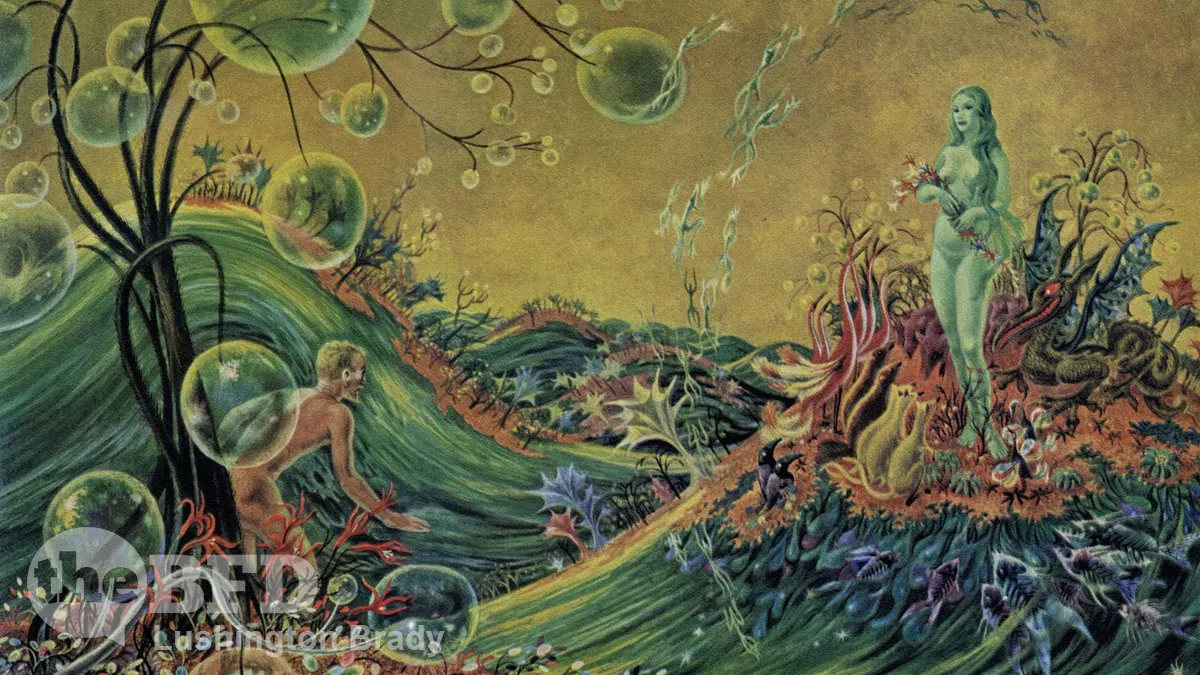From the moment astronomers first trained telescopes on it, Venus was long an enigma. Shrouded entirely in thick white clouds which help make it one of the brightest objects in the night sky, nothing was known of Venus’ surface.
That mystery allowed speculation to run riot. C. S. Lewis, in Perelandra, depicted Venus as a paradise covered entirely by ocean, as did Isaac Asimov. Ray Bradbury’s short story, “All Summer in a Day”, imagined it as a world of unending rainstorms. Chemist Svante Arrhenius, a pioneer in describing the greenhouse effect, compared Venus to the climate of the Congo: “a very great part of the surface of Venus is no doubt covered with swamp”.
All of those romantic delusions were shattered by the first probes to land on the Morning Star. Instead of swamps, they found a hellscape of searing temperatures, crushing pressure and clouds of sulphuric acid.
But some scientists have argued that “Earth’s Twin” may once have been a milder place, indeed with oceans of liquid water. (Such studies have led the more hysterical climate alarmists to argue that Venus is Earth’s global-warmed future.)
A team of astrophysicists led by the University of Geneva (UNIGE) and the National Centre of Competence in Research (NCCR) PlanetS, Switzerland, have just poured cold water on that idea — although caveats apply.
“We simulated the climate of the Earth and Venus at the very beginning of their evolution, more than four billion years ago, when the surface of the planets was still molten,” explains Martin Turbet. “The associated high temperatures meant that any water would have been present in the form of steam, as in a gigantic pressure cooker.” Using sophisticated three-dimensional models of the atmosphere, similar to those scientists use to simulate the Earth’s current climate and future evolution, the team studied how the atmospheres of the two planets would evolve over time and whether oceans could form in the process.
“Thanks to our simulations, we were able to show that the climatic conditions did not allow water vapour to condense in the atmosphere of Venus,” says Martin Turbet. This means that the temperatures never got low enough for the water in its atmosphere to form raindrops that could fall on its surface. Instead, water remained as a gas in the atmosphere and oceans never formed. “One of the main reasons for this is the clouds that form preferentially on the night side of the planet. These clouds cause a very powerful greenhouse effect that prevented Venus from cooling as quickly as previously thought,” continues the Geneva researcher.
What we should bear in mind, here, is that this is essentially climate modelling — with all the shortcomings that apply. These are, after all, the same sorts of models which have consistently failed to accurately model conditions on Earth. Using them to hindcast conditions on another planet, about which we know relatively little, should be treated with abundant caution.
But one interesting outcome of the modelling is its implications for the so-called “Faint Young Sun paradox”.
Given what we know about stellar evolution, during the earliest history of the Earth, the Sun probably only shone with about 70% of its present-day intensity. With that in mind, Earth should have completely frozen. But, leaving aside the catastrophic global cooling period dubbed “Snowball Earth” a little over half a billion years ago, that hasn’t been the case. Various mechanisms have been used to explain the paradox, but the basic question remained: how has Earth’s climate remained so suitable for life?
For Emeline Bolmont, professor at UNIGE, member of PlanetS and co-author of the study, “this is a complete reversal in the way we look at what has long been called the ‘Faint Young Sun paradox’. It has always been considered as a major obstacle to the appearance of life on Earth!” The argument was that if the Sun’s radiation was much weaker than today, it would have turned the Earth into a ball of ice hostile to life. “But it turns out that for the young, very hot Earth, this weak Sun may have in fact been an unhoped-for opportunity,” continues the researcher.
Science Daily
Interestingly, the astrophysicists at least demonstrate a refreshing humility, compared to some of their colleagues in climate science. As study co-author David Ehrenreich concedes, “Our results are based on theoretical models… but we will not be able to rule on the matter definitively on our computers”.
Instead, researchers like Ehrenreich await the results of planned Venus space missions — no less than three are planned over the next decade — to refute or confirm their work.
As always, it doesn’t matter how fancy the model is — if it disagrees with the experiment, it’s wrong.
Please share this article so that others can discover The BFD









